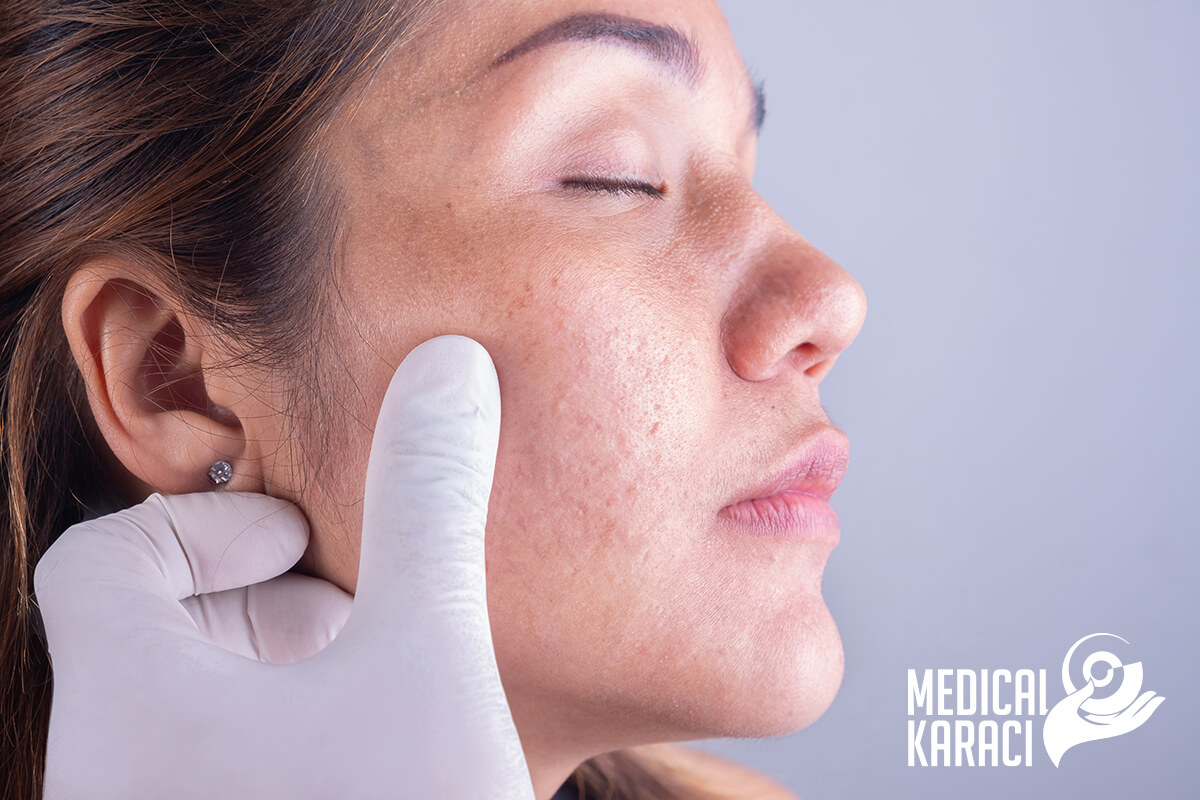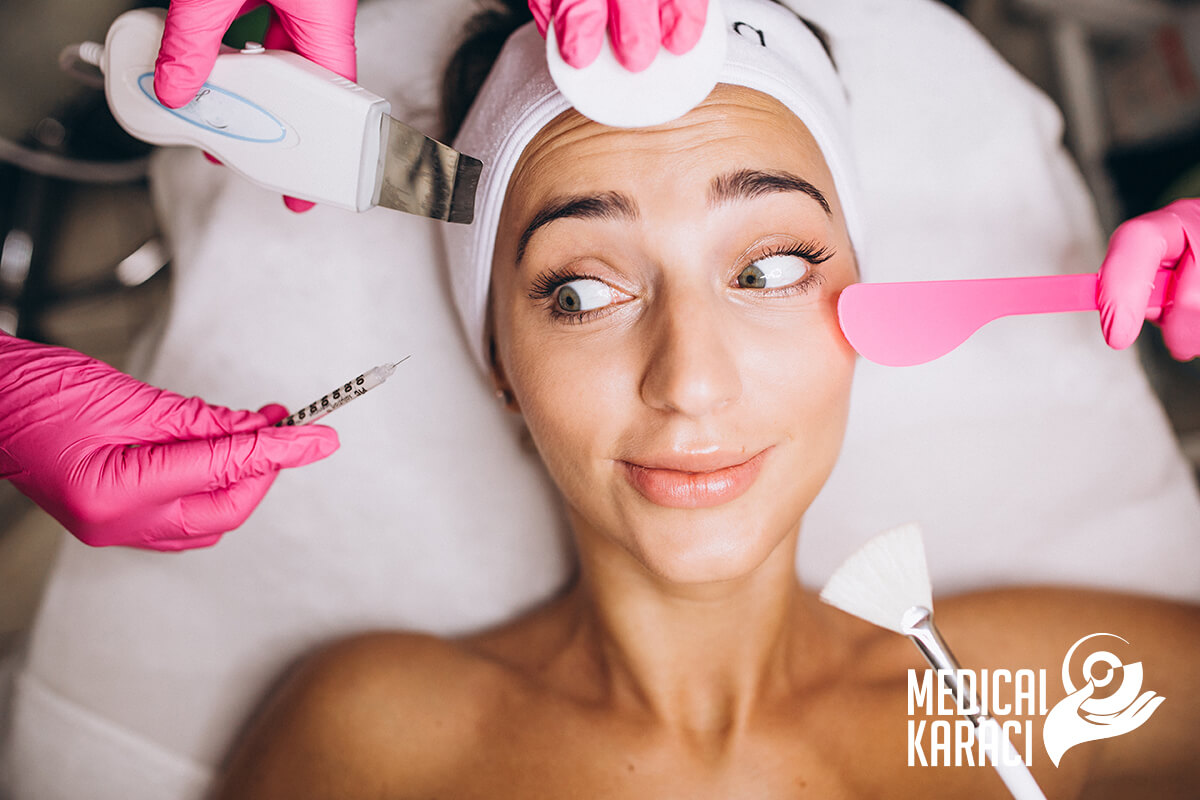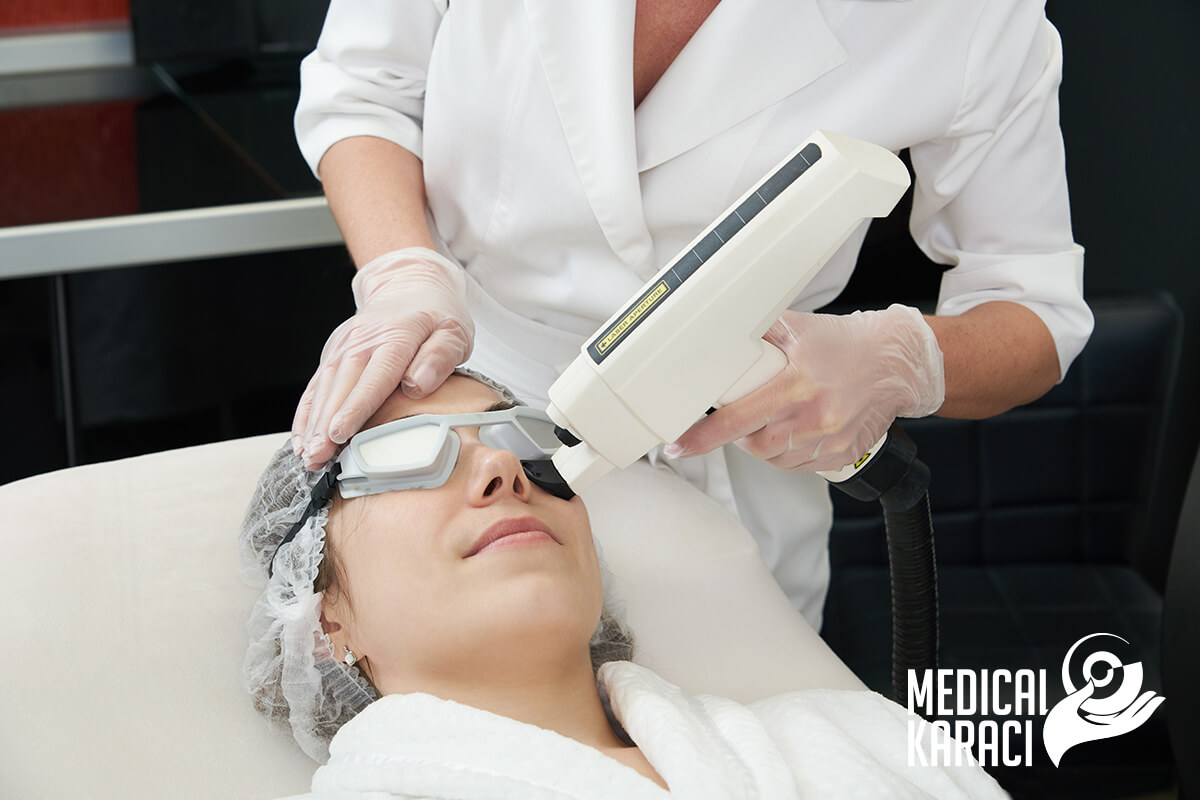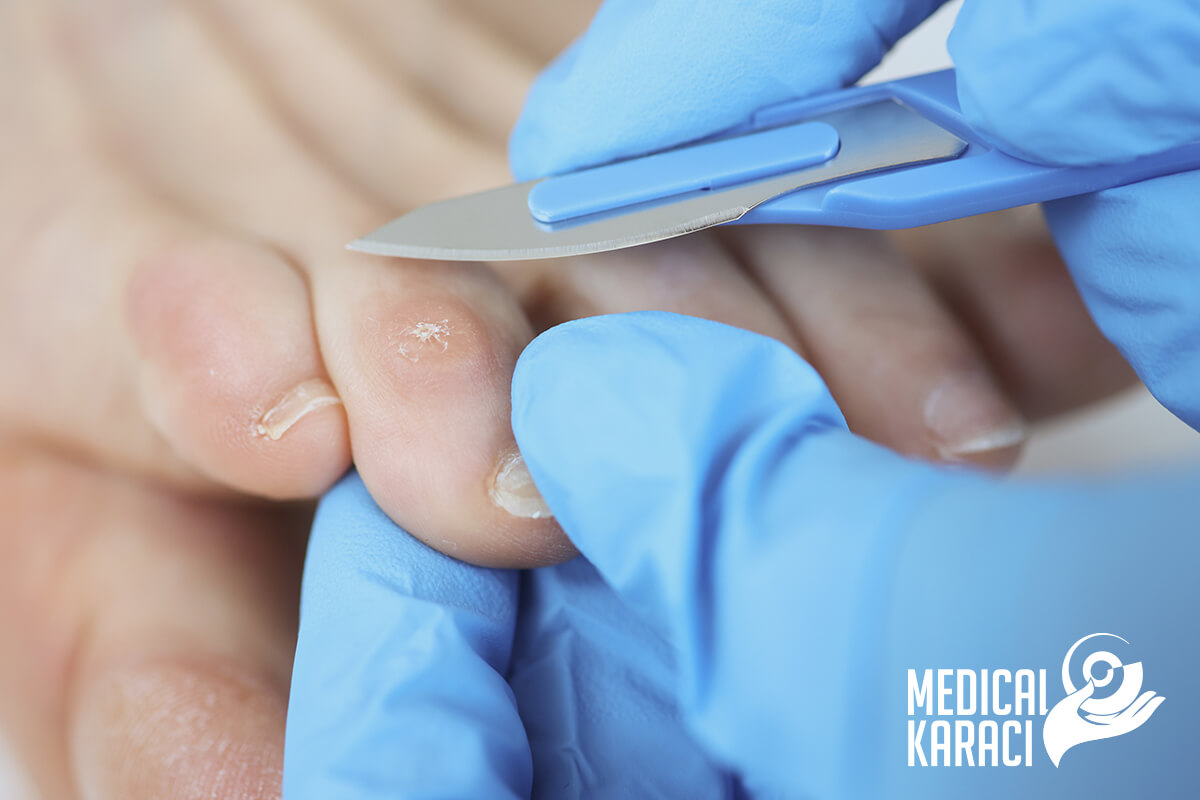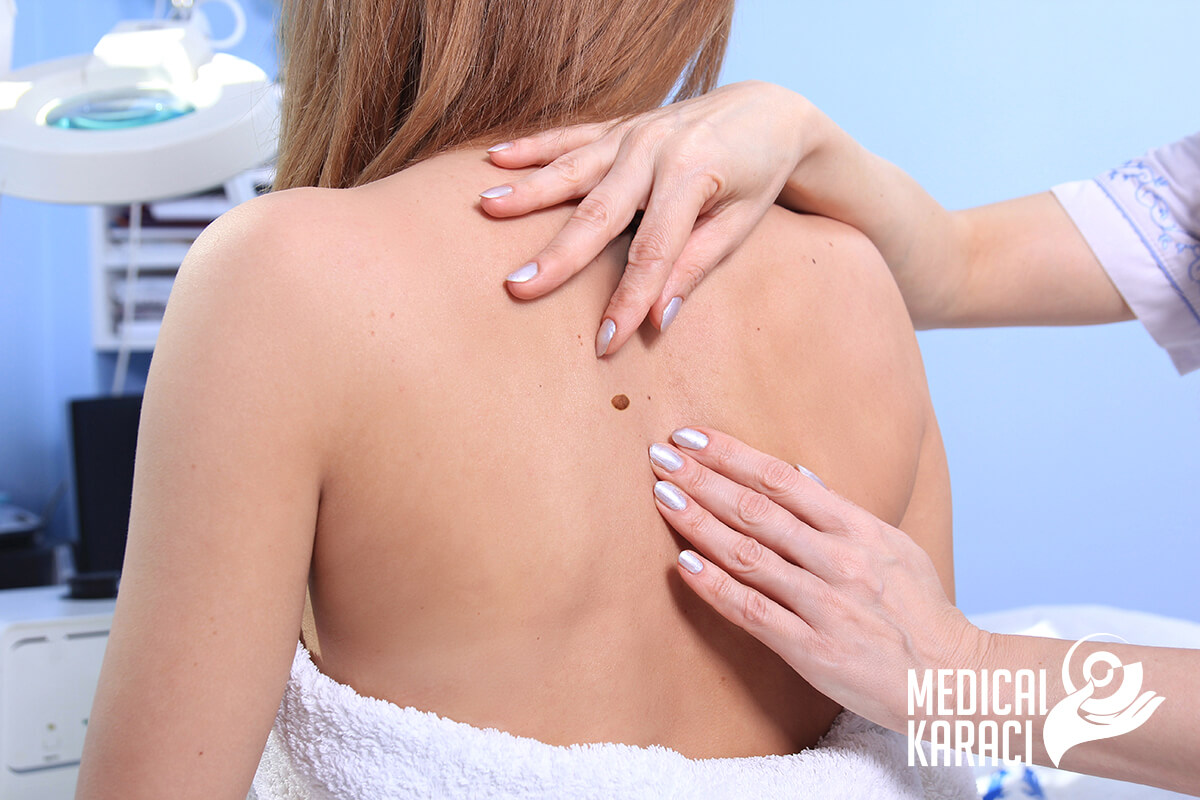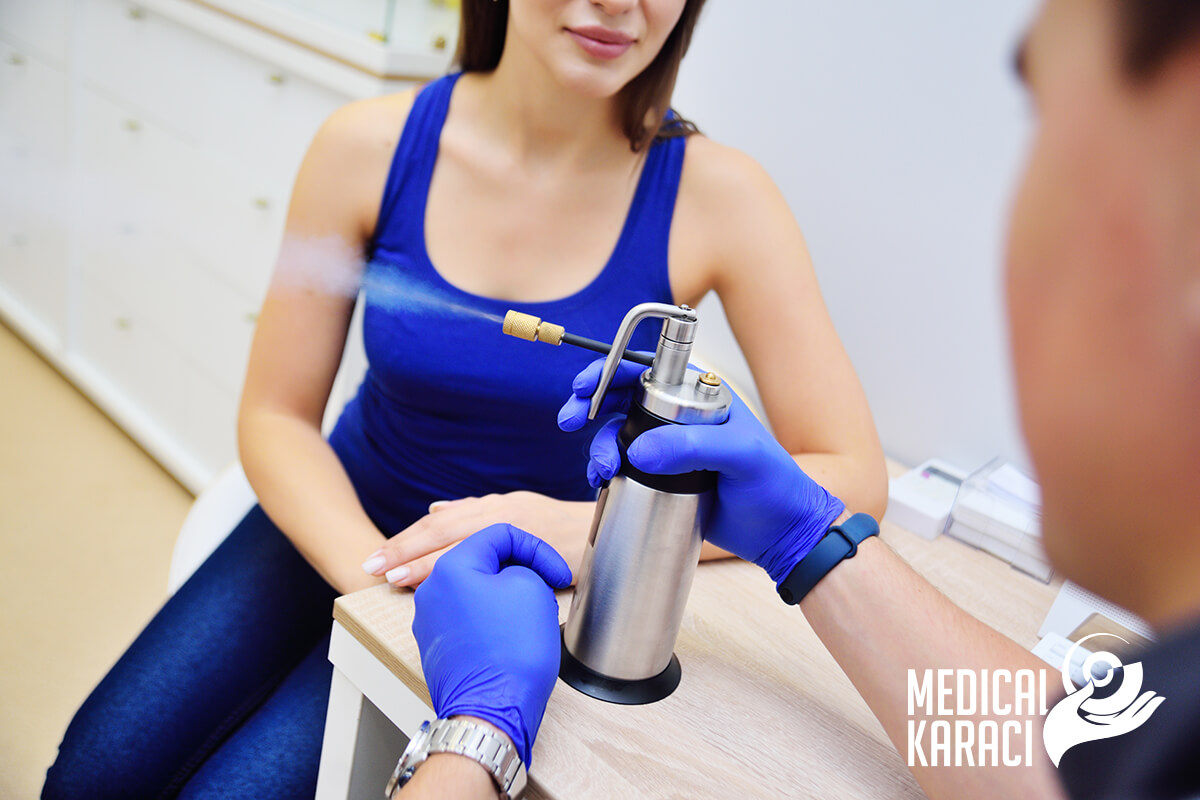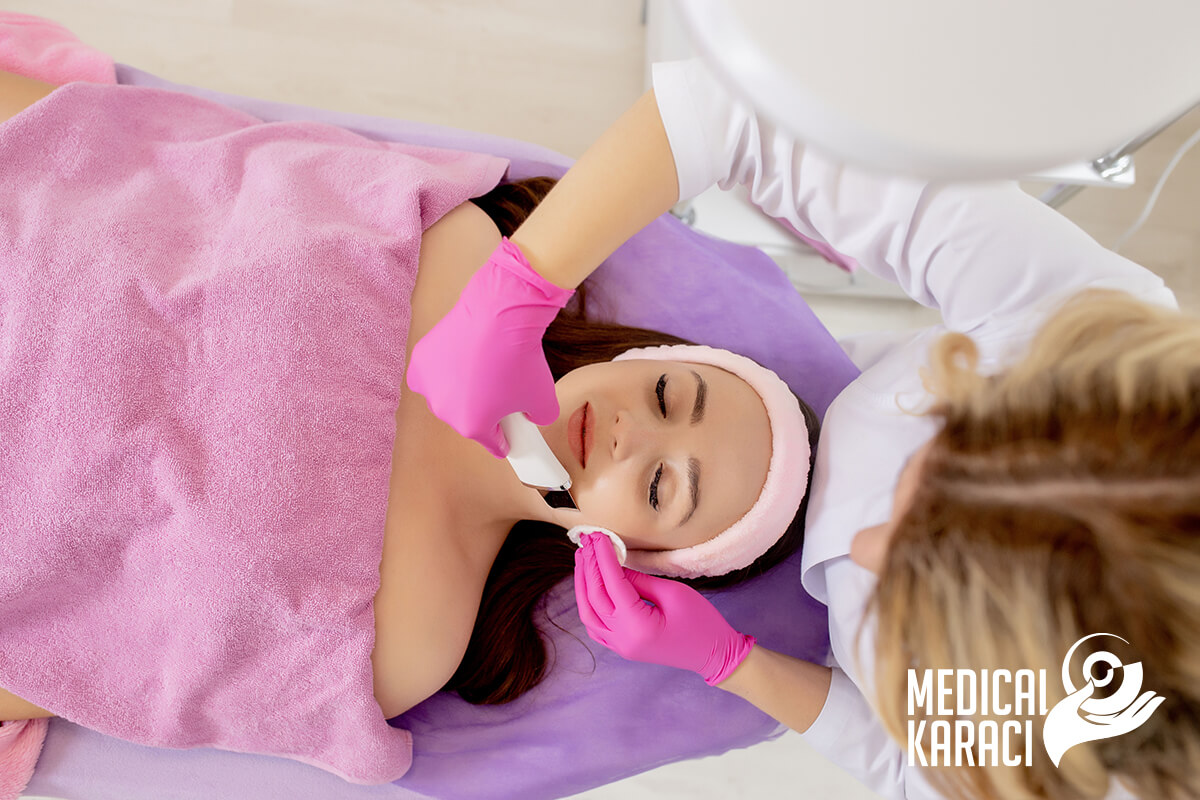Dermatology is a branch of medicine concerned with the diagnosis and treatment of conditions affecting the skin, nails, hair and the delicate mucous membranes of the eyelids, nose and mouth.
The root word for dermatology is derma and is derived from the Greek word derma, which means skin.
The skin is the largest organ of the body. It accounts for about 15% of body weight, and its most important function is to protect the body from aggressive external factors. The skin contains nerve endings, sweat glands, hair follicles, pores, blood vessels and many other structures. Taking care of it is important for overall health.
The main areas of dermatology are:
Medical dermatology
This branch of dermatology includes the diagnosis, treatment and prevention of diseases and disorders of the skin, nails, hair and oral cavity.
Specialists in this subspecialty of dermatology help treat various types of skin disorders, including common and rare ones.
Some of the treatments available in medical dermatology include treatments to remove warts, treat acne, eczema, psoriasis, melasma and vitiligo.
Dermatopathology
Dermatopathology is a subspecialty that combines dermatology with pathology, or the study and identification of diseases using samples of hair, skin, nails, etc. These samples are examined under a microscope in the laboratory. Dermatopathology allows specialist dermatologists to investigate the causes and effects of diseases of the skin, hair and nails and diagnose them accurately at the earliest stages of development.
Pediatric dermatology
If the child suffers from a disease that affects the skin, hair or nails, a visit to a pediatric dermatologist is necessary. He specializes in diagnosing and treating children, including newborns and infants.
Surgical dermatology
In this subspecialty, dermatologists treat diseases that affect the skin, nails, and hair through surgical methods, including the removal of skin cancer.
Cosmetic dermatology
In this branch of dermatology, treatments are applied to improve the appearance of the skin. Cosmetic dermatology includes procedures such as dermal fillers and Botox to smooth fine lines and wrinkles or increase facial volume, chemical peels, laser hair removal to reduce the appearance of scars, wrinkles, etc.
After advancing in the knowledge of the matter - dermatology, specialists divide it into narrower areas such as venereology, allergo-dermatology and a number of others.
Physical examination by a specialist dermatologist and diagnosis with modern equipment, as well as specialized skin tests are the first step towards determining the right approach to solving each patient's dermatological problems.
Various external and internal factors are known to affect the skin and lead to its dehydration and the appearance of pigment spots. Over time, the skin gradually becomes covered with fine lines and wrinkles and loses its elasticity.
The best solution is a dermatological consultation and skin diagnosis, which allow to precisely identify the relevant problems and plan the most correct, safe and effective care.
Diagnosis of the skin
Doctors can identify many skin diseases with just a visual examination. A complete skin examination includes examination of the scalp, nails and mucous membranes. Sometimes the doctor uses a hand lens or a dermatoscope (which includes a magnifying lens and a built-in light) to better see problem areas.
The revealing characteristics include the size, shape, color, and location of the abnormality, as well as the presence or absence of other symptoms or signs. To check the distribution of a skin problem, the physician often asks the patient to undress completely, although the patient may have noticed an abnormality on only a small area of skin.
If a simple examination of the skin does not give the doctor a diagnosis, many tests are available to identify skin disorders.
Biopsy
Sometimes a biopsy has to be taken, in which a small piece of skin is removed for examination under a microscope. For this simple procedure, the doctor usually anaesthetises a small area of skin with a local anaesthetic and, using a small knife (scalpel), scissors, a shaving blade (called a shave biopsy) or a circular cutter (called a punch biopsy), removes a piece of skin. The size of the piece is determined by the type of abnormal growth that is suspected, its location, and the type of tests that need to be done. Sometimes the doctor can both diagnose and treat a small tumor by removing the entire tumor along with a small border of normal skin around it. The tumor is sent to a laboratory for examination under a microscope.
Scrape
If a fungal infection or scab is suspected, the doctor may do a skin scraping. During this test, the doctor scrapes some material from the skin and examines it under a microscope. Sometimes special chemicals are applied to the material.
Culture
If an infection is suspected, a sample of material (such as a skin scraping) can be sent to a laboratory where the sample is placed in a culture medium (a substance that allows microorganisms to grow). If the sample contains bacteria, fungi or viruses, these will often grow in the culture and can then be identified.
Wood's Light (black light)
When certain skin infections are suspected, Wood's test is used. The skin is illuminated with ultraviolet light (also known as black light) in a dark room. The ultraviolet light causes certain fungi or bacteria to glow brightly. The light also highlights the skin's pigment (melanin), making pigmentation abnormalities, such as vitiligo, more visible.
Testing the Tzanck
A Tzanck test is performed to help the doctor diagnose certain diseases caused by viruses, such as herpes simplex and herpes zoster. When these diseases are active, they produce small blisters. During the Tzanck test, the doctor removes the top of the blister with a sharp blade and then scrapes the blister with a scalpel to obtain fluid. The sample is examined with a microscope after special solutions are applied.
Diaspora
Dioscopy is done so that the doctor can observe changes in color that occur when pressure is applied to the skin. During this test, the doctor presses a microscope slide against a lesion to see if it fades (bleaches) or otherwise changes color. Some types of lesions bleach while others do not. When this test is done some skin lesions (such as those caused by sarcoidosis) take on a yellowish-brown color.
Skin tests
Skin tests, including a sensitivity test, patch test, prick (puncture) test, and intradermal test, may be done if the doctor suspects that an allergic reaction is causing the rash.
The sensitivity test , in which a suspected substance is applied away from the original area where the rash occurred (usually on the forearm), is useful when perfumes, shampoos or other substances found in the home may be the cause of the allergy.
In the patch test, very small samples of common and suspected reaction-causing agents, known as allergens, are applied to the skin (usually on the upper back) under adhesive tape and left. The skin under the patches is assessed 48 hours later after removal of the patches and then again at 96 hours. Often the skin takes several days to elicit a visible reaction. If a substance produces a characteristic red, usually itchy rash, the person is probably allergic to it. Sometimes substances cause irritation that is not a true allergic reaction.
In the prick test, a drop of extract of the suspected substance is placed on the skin. The drop is then pricked or punctured with a needle to introduce a very small amount of the substance into the skin. The skin is then observed for redness, hives or both, which usually appear within 30 minutes.
In the intradermal test, small amounts of a substance are injected under the skin. The area is then monitored for redness and swelling that indicate an allergic reaction.
Although rare, prick and intradermal tests can cause a severe allergic reaction known as anaphylaxis, which can be life-threatening. Therefore, these types of tests should only be performed by a trained healthcare professional.
What conditions do dermatologists treat?
Dermatologists can treat thousands of conditions that affect the skin, hair or nails. Some of the most common conditions they treat include:
- Acne - Depending on the severity of the acne, a dermatologist may treat this condition with topical treatments, medications, lasers or other light therapies, chemical peels or by removing large cysts.
- Skin cancer - Skin cancer can occur anywhere on the body. The dermatologist can remove the cancer cells and monitor the patient to make sure they do not reappear.
- Dermatitis - Dermatitis encompasses several types of skin conditions that cause inflammation and irritation. This can include eczema or allergic reactions.
- Infections - Viruses, bacteria, fungi and parasites can penetrate the skin and cause various skin infections. A dermatologist can help diagnose the cause of infections and prescribe treatment.
- Hair loss - Hair loss can be caused by hereditary factors. Conditions such as stress, illness and hormonal changes can also affect hair loss. A dermatologist can determine the underlying cause and help treat it if possible.
- Nail problems - Stains, discoloration and separation of nails are common problems , which dermatologists treat successfully.
What procedures do dermatologists do?
Dermatologists can perform a wide variety of procedures, from minor ones like mole removal to more involved ones like surgery for skin cancer.
Some procedures that dermatologists regularly perform include:
Laser therapy
The first lasers used to treat skin diseases appeared more than 40 years ago. Argon and carbon dioxide (CO2) lasers were commonly used to treat benign vascular birthmarks, such as hemangiomas. Over the past 20 years, advances in laser technology have revolutionized their use in treating many skin conditions and birth defects, including vascular and pigmented lesions, and removing tattoos, scars and wrinkles. A spectrum of laser and light technologies is available for skin restoration and rejuvenation.
Properties of laser light
Lasers are high-intensity light sources with the following properties:
- Monochromatic - the radiation is one wavelength
- Coherent - the light rays are in phase
- Collimated - light rays move in parallel
- The laser light can be accurately focused into small points with very high energy.
Light is produced in a small cavity containing a medium, which can be a gas (e.g., argon, krypton, carbon dioxide), liquid (e.g., dye), or solid (e.g., ruby, neodymium:yttrium-aluminum-garnet, alexandrite ). The process involves excitation of the molecules of the laser medium, resulting in the release of a photon of light upon its return to a stable state. Each medium produces a specific wavelength of light, which can be within the visible spectrum (violet from 400 to red 700 nm) or the infrared spectrum (more than 700 nm).
Vascular skin lesions contain oxygenated haemoglobin, which strongly absorbs visible light, whereas pigmented skin lesions contain melanin, which has a wide range of absorption in the visible and infrared wavelengths. Infrared lasers are widely destructive because they are absorbed by water and between skin cells (they consist of 70-90% water).
The goal is to destroy the target cells and not harm the surrounding tissues. The short pulses reduce the amount that damaged cells heat up, thus reducing thermal injury that can lead to scarring.
Laser therapy can be used to remove warts, moles, sun spots, tattoos, acne scars, blemishes, wrinkles or unwanted hair. Laser therapy is also used for wounds that are difficult to heal.
Surgical excision
The dermatologist may perform surgical excision to remove growths such as moles, skin scars and lesions. This is usually done with local anesthesia so as to eliminate pain.
Cosmetic surgical procedures include:
- Dermabrasio - consists in removing the superficial layers of the skin with the help of special devices. After the procedure, as well as after the recovery period, the skin becomes healthier, younger, without imperfections and unevenness. The controlled removal of the upper layers of the skin aims to trigger the activation of regeneration processes, replacing the damaged skin with a new layer, free of defects.
- Treatment of scars such as subcision - Subcision is a minimally invasive surgery in which a cannula inserted under the surface of the skin is moved back and forth to break the scar tissue and repair the scar.
- Suction curettage for sweating - This method is used in acute forms of hyperhidrosis of the armpits, when other methods do not help in combating sweating. The aim of the procedure is to restrict the function and distribution of sweat glands in the armpits.
Tumescent liposuction. Dermatologists use liposuction to remove unwanted fat from targeted areas of the body. - Surgery of the eyelids - Surgery in dermatology is essential for the removal of skin cancers and suspected skin cancers, including:
- Melanoma
- Squamous cell carcinoma
- Many basal cell carcinomas
- Rare skin tumors
Mohs Surgery
Mohs surgery is a precise surgical technique used to treat skin cancer. During Mohs surgery, thin layers of skin containing cancer are gradually removed and examined until only cancer-free tissue remains. Mohs surgery is also known as Mohs micrographic surgery.
The goal of Mohs surgery is to remove as much skin cancer as possible while causing minimal damage to surrounding healthy tissue. Mohs surgery is usually performed on an outpatient basis using a local anesthetic.
Mohs surgery is an improvement on standard surgery (local excision) that involves removing the visible cancer and a small rim of surrounding healthy tissue at once. Mohs surgery allows surgeons to check that all cancer cells have been removed during surgery. This increases the chance of cure and reduces the need for additional treatments or further surgery.
Why is it done?
Mohs surgery is used to treat the most common skin cancers - basal cell carcinoma and squamous cell carcinoma, as well as some types of melanoma and other more unusual skin cancers.
Mohs surgery is particularly useful for patients with skin cancer who:
- There is a high risk of relapse or one that has recurred after previous treatment
- Located in areas where as much healthy tissue as possible should be preserved, such as around the eyes, ears, nose, mouth, hands, feet and genitals
- There are boundaries that are difficult to define
- Is large or aggressive
Risks:
As with any surgical procedure, Mohs surgery carries the risk of:
- Bleeding
- Pain or tenderness around the site of surgery
- Infection
- Other complications that can result from Mohs surgery are uncommon, but may include:
- Temporary or permanent numbness around the surgical area if small nerve endings are cut
- Temporary or permanent weakness of the surgical area if the tumor is large and a muscle nerve has been severed
- Itching or shooting pain in the affected area
- Angular scar (keloid)
What you can expect:
Mohs surgery can be technically challenging. Many skin doctors (dermatologists) can perform Mohs surgery. Some surgeons have undergone specialized training to learn more about the procedure and become more proficient in Mohs surgery.
Stop taking certain medications. Your surgeon needs to know about any medications or supplements you are taking, including any blood thinners. Continue taking all prescribed medicines as directed unless your surgeon tells you otherwise.
It is not possible to predict how long Mohs' operation will last. For most people, the procedure takes less than four hours
Mohs surgery is performed on an outpatient basis in an operating room that has a nearby laboratory. This allows the surgeon to examine the tissue after it is removed.
During the procedure:
Once anesthesia is in effect, your surgeon will use a scalpel to remove the visible part of the cancer along with a thin, underlying layer , which is slightly larger than the visible tumor. A temporary dressing is placed over the incision. This only takes a few minutes.
The surgeon then takes this tissue to the lab for analysis. This part of the procedure usually takes the longest- about an hour.
The surgeon or technician cuts the tissue sample into sections and examines them with a microscope. Your surgeon takes great care to keep track of the exact spot where each piece of tissue was removed by making a map. This way, if a small piece of cancer is found in one piece of tissue, the surgeon knows exactly where to proceed with surgery.
If there is cancer in the sample, Mohs surgery will proceed. Your surgeon removes an extra layer of tissue from the affected area, taking care to remove the tissue that contains cancer while leaving as much healthy tissue intact as possible. Again, you will wait while the surgeon examines the tissue in the lab.
The process is repeated until the last tissue sample removed is cancer-free. Local anesthetic may be re-applied if necessary.
After the procedure:
Once all the cancer has been removed, you and your surgeon can decide how to repair the wound. Depending on the extent of the surgery, this may include:
- Letting the wound heal itself
- Using sutures to close the wound (primary closure)
- Moving skin from an adjacent area (skin flap) to cover the wound
- Using grafted skin from another part of the body, for example behind the ear, to cover the wound
- If the surgical area is extensive or complex, your surgeon may temporarily close your wound and then refer you to another surgeon for reconstructive surgery to repair the wound.
Results:
One of the advantages of Mohs surgery is that you learn your results right away, and usually the surgery isn't over until all the cancer is removed. You may have a follow-up visit with your surgeon or referring physician to monitor your recovery and make sure the wound is healing properly.
Although Mohs surgery has a high cure rate for skin cancer, there will always be a small risk of cancer recurrence or of developing another skin cancer.
People who are diagnosed with skin cancer have an increased risk of developing skin cancer again, compared to people who have never had skin cancer. About half of people diagnosed with the most common types of skin cancer will develop another skin cancer again within five years.
Schedule regular check-up visits with your dermatologist or family doctor to detect any new skin cancer. Ask your dermatologist to set up a follow-up schedule for you. How often you have follow-up skin exams depends on your diagnosis. Expect to have skin exams at least once or twice a year, and more often if your cancer has been aggressive or is more likely to recur.
Cryotherapy
The term "cryotherapy" literally means "treatment using low temperature" and refers to the removal of skin lesions by freezing them. The most common product used by doctors is liquid nitrogen.
A wide variety of superficial benign (non-cancerous) lesions can be treated with cryotherapy, but it is most commonly used to remove actinic keratoses (an area of sun-damaged skin found primarily on sun-exposed parts of the body), viral warts, seborrheic keratosis, Bowen's disease, and other benign lesions. Your dermatologist may suggest the use of cryotherapy to treat a superficial type of low-grade skin cancer known as basal cell carcinoma.
Although there is mild local pain, cryotherapy usually does not require local anesthesia, and the procedure itself lasts a few seconds; the exact time depends on the thickness and size of the lesion. The frozen skin turns white and takes one to two minutes to thaw to normal skin temperature. Your doctor may suggest repeating the procedure once the skin has thawed. After a few days, scabs will form and this will take one to two weeks to fall off (occasionally a little longer, especially on the legs). Usually the treated area will eventually look normal, although scarring and discoloration are possible and rarely ulceration, especially on the shins.
Depending on the nature of the lesion, more than one treatment may be necessary, which is usually repeated at regular intervals.
What are the side effects of cryotherapy?
Immediate side effects:
- Cryotherapy is usually well tolerated, but can sometimes be painful if deep freezing is necessary (i.e. for treatment of basal cell carcinoma). This discomfort can occur both during treatment and for varying times afterwards. Painkillers (such as paracetamol) taken in the first 24 hours can relieve the discomfort. Taking a painkiller an hour or more before the expected treatment may reduce discomfort.
- Swelling and redness - this is a normal immediate response to freezing of the skin and usually disappears after two to three days. Cryotherapy near the eyes can cause severe swelling of the lower eyelids that resolves within days.
- Blistering - this is also a common consequence of cryotherapy. Some people blister more easily than others and the development of blisters does not necessarily mean that the skin has frozen too much. Sometimes blisters can fill with blood, this is harmless and should only be punctured using a sterile needle if the blister is very painful.
- Infection - unusually an infection may occur leading to increased pain and pus formation: this may require topical antiseptic or antibiotic therapy by the doctor who performed the treatment.
Subsequent side effects:
- Scarring - rarely will a scar form, especially if deep freezing is necessary (i.e. for treatment of basal cell carcinoma).
- Hypertropic/kelloid scars - very rarely, a scar that looks like a rounded, hard growth on the skin may form after cryotherapy treatment. These are harmless lesions, more common in individuals with dark skin.
- Changes in pigmentation - the skin on and around the treatment site may lighten or darken in colour, especially in people with swarthy skin. This usually improves with time but may be permanent.
- Numbness - if the superficial nerve is frozen, this can cause numbness to the area of skin innervated by that nerve. Normal feeling usually returns within a few months.
Treatment may not be effective or the condition may recur.
Sclerotherapy
Sclerotherapy is a minimally invasive method of treatment in which a small amount of a sclerosing agent (sclerosant) is injected into the inside of the varicose vein in order to fuse its walls together, thereby shutting it off from the bloodstream and directing blood to other adjacent normally functioning veins in a compensatory manner.
Sclerotherapy is suitable for the treatment of telangiectasias, venulectasias, reticular veins and larger varicose veins.
Sclerotherapy is often performed for:
- Cosmetic purposes - to improve the appearance of varicose and spider veins
- The procedure can also improve associated symptoms such as:
- Pain
- Swelling
- Burning
- Night cramps
Sclerotherapy is an extremely safe method, but some side effects and complications are possible, such as:
- itchy skin
- small haematomas in the injection area
- redness of the skin
- slight brownish discoloration of the skin around the prickles, which also gradually fades
- slight thickening along the course of a treated vein
- thrombophlebitis - a less common complication that resolves with adequate and timely treatment
These side effects usually disappear within a few days to a few weeks. Some side effects may take months or even years to go away completely.
Chemical peeling
A chemical peel is a procedure in which a chemical solution is applied to the skin to remove the top layers. The skin that grows back is smoother and more elastic. For mild or medium peels, the procedure may need to be repeated more than once to get the desired results.
Chemical peels are used to treat wrinkles, discoloured skin and scars - usually on the face. It can be done alone or combined with other cosmetic procedures. Deeper chemical peels offer more dramatic results, but also take longer to recover from.
Why is it done?
A chemical peel is a skin restoration procedure. Depending on the problems being addressed by the procedure, a chemical peel is chosen in one of three depths:
- Light chemical peeling. A light (superficial) chemical peel removes the outer layer of the skin (epidermis). It is used to treat fine lines, acne, uneven skin tone and dryness. A light peel can be done every two to five weeks.
- Medium chemical peel. A medium chemical peel removes skin cells from the epidermis and from parts of the upper middle layer of the skin (dermis). It is used to treat wrinkles, acne scars and uneven skin tone. The procedure may need to be repeated to achieve or maintain the desired result.
- Deep chemical peeling. Deep chemical peels remove skin cells even deeper. It is recommended for deeper wrinkles, scars or precancerous growths. There is no need for repeated treatments to get the full effect.
Risks:
Chemical peels can cause a variety of side effects, including:
- Redness, scabs and swelling. Normal healing from a chemical peel involves redness of the treated skin. After a medium or deep chemical peel, redness may last for several months.
- Scars. Rarely, chemical peels can cause scarring - usually on the lower face. Antibiotics and steroid medications can be used to soften the appearance of these scars.
- Changes in skin color. Chemical peels can cause treated skin to become darker than normal (hyperpigmentation) or lighter than normal (hypopigmentation). Hyperpigmentation is more common after a superficial peel, while hypopigmentation is more common after a deep peel.
- Infection. Chemical peels can lead to bacterial, fungal or viral infection, such as an exacerbation of the herpes virus (the virus that causes cold sores).
- Damage to the heart, kidneys, or liver. Deep chemical peels use carbolic acid (phenol), which can damage the heart muscle and make the heart beat irregularly. Phenol can also damage the kidneys and liver. To limit exposure to phenol, deep chemical peels are performed in portions, at 10- to 20-minute intervals.
Results:
Light chemical peels improve skin texture and tone and reduce the appearance of fine lines. After a medium chemical peel, the treated skin will be noticeably smoother. After a deep chemical peel, there will be a dramatic improvement in the look and feel of the treated areas. The results may not be permanent. Over time, age and new sun damage can lead to new lines and changes in skin color.
With all peels, the new skin is temporarily more sensitive to the sun.
Cosmetic injections
A dermatologist can help reduce the appearance of wrinkles and sagging skin by injecting Botox or fillers.
For more information, you can call +359895770869.

